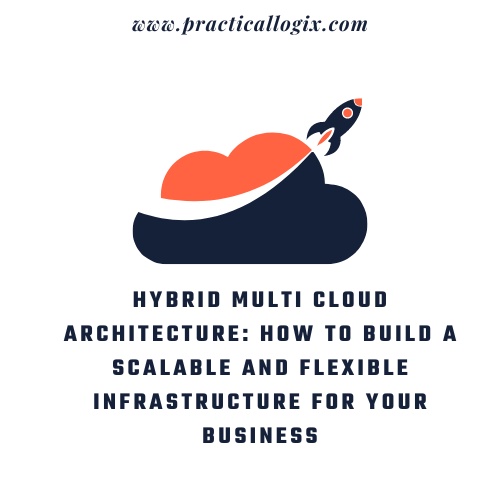In today’s digital landscape, businesses must be agile enough to handle the demands of an ever-evolving market. This requires a robust and flexible cloud infrastructure that can meet the needs of the organization’s mission-critical applications. One increasingly popular approach is hybrid multi-cloud architecture. This blog post will explore hybrid multi-cloud architecture and how it can help businesses build scalable and flexible infrastructure.
What is Hybrid Multi-Cloud Architecture?
Hybrid multi-cloud architecture is a deployment model that combines public clouds, private clouds, and on-premises infrastructure. With hybrid multi-cloud, businesses can take advantage of the benefits of different cloud environments and create a custom solution that meets their specific needs. This approach allows organizations to achieve maximum flexibility and scalability while also providing advanced security and compliance features.
Benefits of Hybrid Multi-Cloud Architecture
1.Scalability
The hybrid multi-cloud architecture allows businesses to scale their infrastructure up or down quickly as needed. This is particularly helpful during periods of high traffic or when new applications need to be deployed. With public clouds, businesses can scale quickly and cost-effectively, while on-premises infrastructure provides a reliable and secure option for business-critical applications.
2. Flexibility
With hybrid multi-cloud, businesses can deploy applications where it makes the most sense for their needs. For example, applications that require fast response times can be deployed on-premises, while less critical applications can be deployed in the public cloud for cost savings.
3. Reliability
Hybrid multi-cloud architecture provides increased reliability and uptime for businesses. By deploying applications across multiple environments, businesses can ensure that their applications remain available even if one environment experiences downtime due to a failure or outage.
4. Security
By deploying applications across multiple environments, businesses can take advantage of advanced security and compliance features available in each environment. This provides businesses with multiple layers of security protection and can help reduce the risk of a security breach.
How to Build a Scalable and Flexible Infrastructure with Hybrid Multi-Cloud Architecture
1. Define Your Requirements
Before building a hybrid multi-cloud architecture, it is important to define your requirements. This includes identifying the types of applications you will be deploying, the level of scalability and performance required, and any security or compliance regulations that need to be met.
2. Choose Your Cloud Environments
The next step is choosing the right cloud environment for your business. This may include a mix of public cloud providers, private clouds, and on-premises infrastructure. It is important to choose environments that are compatible with each other and can support seamless integration.
3. Determine How Applications Will Be Deployed
Once the cloud environments have been chosen, the next step is determining how applications will be deployed. This includes deciding which applications will be deployed in which environments and how data will be synced. This requires careful planning and consideration of latency and bandwidth requirements.
4. Implement Monitoring and Management Tools
Finally, implementing monitoring and management tools is critical for ensuring the hybrid multi-cloud architecture performs optimally. This includes tools for monitoring performance, tracking usage, and identifying potential issues before they become problems.
Conclusion
According to Practical logix, Hybrid multi-cloud architecture provides businesses with the flexibility, scalability, and reliability needed to succeed in today’s digital landscape. By deploying applications across multiple environments, businesses can take advantage of the benefits of each environment while also ensuring advanced security and compliance features. To build a scalable and flexible infrastructure with hybrid multi-cloud architecture, it is important to define your requirements, choose your cloud environments, determine how applications will be deployed, and implement monitoring and management tools.


No comments yet